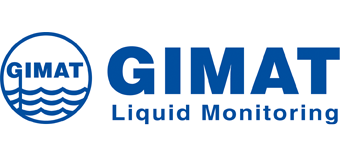Frequently Asked Questions
Here you will find a compilation of questions and answers from practice, for practice. If you cannot find the answer to your question or require more detailed information, please contact us. We’re here to help!
Ammonium / Nitrate
What are the advantages of probe systems?
The advantages over wet-chemical analyzers are manifold:
- no reagents
- no sample preparation
- almost maintenance free
- easy installation at the edge of the pool
- Measurement directly in the medium
What is the delay time?
Usually less than 2 minutes.
What are the annual costs?
The wear is similar to a DO probe. It is only the membrane head and the electrolyte to change. The cost of a set of wearing parts is usually less than 200 euros per year.
What is the typical measuring range for probe systems?
The highest accuracies can be achieved in the range of 1 ~ 1,000 mg/L (ppm). Below 1 mg/L (ppm), the measurement accuracy is limited, but a measurement is easily possible.
What are typical applications of probes?
- Pre-treatment process (e. g. for filtrated water management)
- aeration tank (optimization of oxygen input)
- outlet of final clarifyer (monitoring of compliance with limit values)
What is the measurement accuracy of probes?
Typically ± 5% of the reading and ± 0.5 mg/L (ppm).
How much maintenance does the sensor require?
Usually only the probe cleaning and a matrix adjustment. The matrix adjustment can be easily done by a photometric comparison measurement in the laboratory. The laboratory value is entered into the instrument and the meter automatically corrects.
Why do not you need chloride ion compensation with GIMAT probes?
Conventional ion-selective electrodes (ISE) can make a poor distinction between nitrate and chloride. GIMAT has developed a special membrane that made the measurement much less sensitive to chloride.
Chemical Oxygen Demand
What is covered by the COD?
All ingredients of wastewater that consume oxygen chemically during oxidation. In addition to carbon compounds, these may also be nitrogen and sulfur compounds.
What is covered by the TOC?
TOC (Total Organic Carbon) records only the carbon compounds. Other wastewater ingredients that have a COD but no carbon are not detected.
Is there a fixed relationship between COD and TOC?
If the water and wastewater composition changes, an exact conversion factor cannot be calculated.
Is the SAC a suitable replacement parameter for a true COD measurement?
Sometimes good relationships can be established between the SAC (Spectral Absorption Coefficient) and the COD. But with fluctuating wastewater composition, often no good connection can be determined.
COD or TOC - which online parameter is more meaningful for a wastewater treatment plant?
The COD value, since the treatment plant is designed after the COD and in the laboratory usually the COD is determined.
What’s special about the GIMAT method for COD?
The combination of the oxidizing agent H2O2 and UV light as an energy source. This makes the GIMAT method safe for the user, environmentally friendly and at the same time it guarantees a very good digestion of the sample. The H2O2 / UV method is an online method recommended by German guideline DWA 269.
With which other methods can the oxidation strength of H2O2 under UV light be compared?
With ozone (O3), but ozone is harmful to the user.
What is the maximum measuring range of the GIMAT method for COD?
0 ~ 600 mg/L (ppm) without dilution of the sample. When diluting the sample with drinking water, measuring ranges of 100 ~ 10,000 mg/L (ppm) can be achieved.
Phosphate / Phosphorus
What is the best sample preparation?
This depends on the application. In certain applications, ultrafiltration still proves best.
Is ultrafiltration outdated?
In certain applications, in particular the pre-treatment process, ultrafiltration continues to be unbeatable.
Where should one measure PO4 to save precipitant?
At the end of primary clarification in order to be able to react as quickly as possible to fluctuations in the phosphate concentration or load. Where a Bio-P degradation takes place, the measuring point should be at the end of the process.
